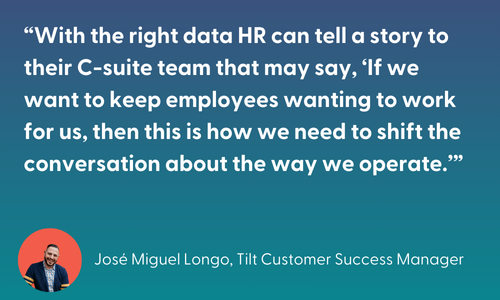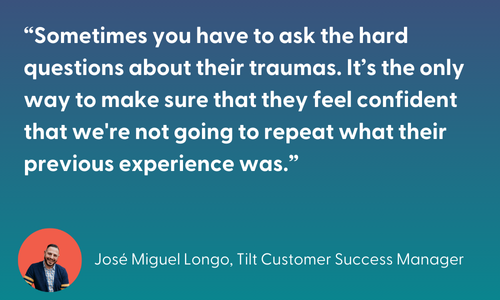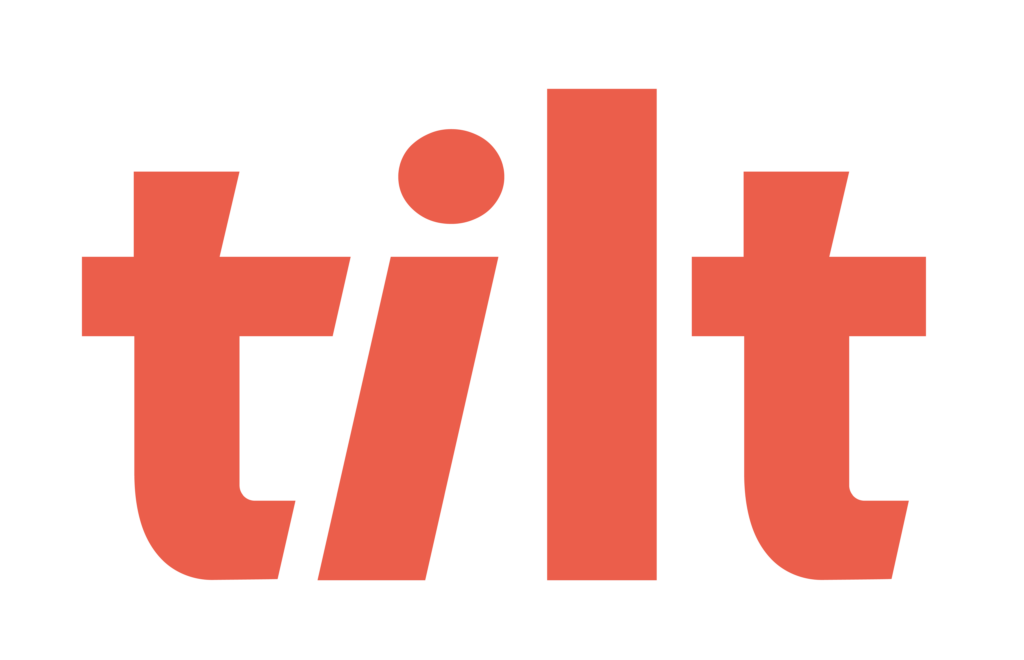When you’re managing a large workforce, the right system can mean the difference between blissfully streamlined efficiency and total chaos. But with so many options on the market, how do you know which HR software is the best fit for your organizational needs?
Choosing software that looks good on paper but falls short in execution is commonplace. Maybe you’ve been burned before by a vendor that overpromised and underdelivered, or a system that simply couldn’t keep up with your company’s growth.
To avoid making the same mistakes, keep these five critical factors in mind.
1. Data & Benchmarking: Can HR Software Help You Tell a Story?
Data is more than just numbers, it’s a narrative that can help HR professionals make informed decisions and advocate for employees.
“Data has the power to tell a really impactful story,” says José Miguel Longo, a Customer Success Manager at Tilt. “With the right data HR can tell a story to their C-suite team that may say, ‘if we want to keep employees, if we want to keep morale up, if we want to keep employees wanting to come to work for us, then this is how we need to shift the conversation about the way we operate.”
With data, the story HR leaders are painting is grounded in facts.. Without data, the story merely becomes anecdotal to leadership making positive change harder to come by.
The best HR software provides robust analytics that allow you to measure your company’s performance.
Whether your software helps add context to retention rates or leave policy usage, data-driven insights can give you the leverage you need to make strategic improvements.

2. Employee Experience: Does Your HR Software Truly Put People First?
Your HR software isn’t just for making your team’s life easier, it likely directly (and sometimes indirectly) impacts every employee in your organization.
If the user experience is clunky, confusing, or outdated, engagement will suffer. A bad employee experience can lead to frustration, inefficiency, and even turnover.
HR professionals know this all too well. Employees expect seamless, self-service functionality, especially when it comes to foundational experiences like the way your leave policies are managed.
“Benefits make or break a company,” adds Jose Miguel. “It’s one of the main reasons why an employee will choose to work somewhere in the first place. If you as a business know why your employees come to work for you and that’s a selling point, then it’s up to you to continue to live up to those promises and strive to make the experiences better.”
When evaluating HR software, ask: Does it make employees’ lives easier? Does it allow them to access their information quickly, submit requests effortlessly, and get the support they need? If the answer is no, keep looking.
3. Compliance & Adaptability: Can HR Software Keep Up with Changing Regulations?
Laws governing leave, benefits, and payroll change constantly. If your HR software can’t keep up it puts your company at risk. Is it the most fun part of HR’s job? No. Is it the least fun part? Yeah, probably.
The last thing any HR leader wants is to be caught off guard by a compliance issue that could have been prevented.
Your HR software should proactively update based on current rules and regulations, and offer built-in safeguards to keep your organization in check. It should also be flexible enough to accommodate different labor laws in different geographical locations. Additionally, the right software should provide visibility into potential risks, helping your team stay proactive rather than reactive.
A reliable system should centralize compliance-related data, making it easy for HR professionals to generate reports, track changes, and ensure that their organization is meeting legal requirements.
Without a system that keeps compliance at the forefront, HR teams may find themselves scrambling to address regulatory shifts, wasting time, resources, and risking legal repercussions.
4. Scalability & Integration: Will HR Software Grow With Your Company?
The software you choose today should still work for your company five years from now. Too often, HR teams find themselves trapped in a system that can’t scale as their workforce expands or their needs evolve.
A robust HR platform should:
- Connect seamlessly with your existing HR tech stack
- Offer options that align with your organization’s unique workflows and desired level of involvement
- Support an increasing number of users, locations, and compliance requirements without breaking down
Outgrowing your HR software doesn’t happen overnight.
It’s a slow buildup of inefficiencies, workarounds, and mounting frustrations. Processes that once worked seamlessly start to feel clunky, reporting becomes unreliable, and integration gaps create more manual work.
When your software becomes more of a burden than a solution, it drains valuable time and prevents HR leaders and the teams they manage from focusing on strategic initiatives. Selecting a system that evolves with your company ensures you won’t be held back by outdated technology when you need to move forward.
5. Vendor Support & Partnership: Will They Be There When You Need Them?
Even the best software can fall short if the vendor doesn’t offer strong customer support. When you’re dealing with complex HR processes, having a reliable partner matters.
HR professionals often come to new software vendors with baggage; previous bad experiences, unmet promises, and a fear of making another costly mistake.
“Oftentimes you have to build that trust from the ground up,” explains José Miguel. “And sometimes you have to ask the hard questions about their traumas. It’s the only way to make sure that they feel confident that we’re not going to repeat what their previous experience was.”

A strong vendor will do more than just sell you software, of course, they will act as a true partner. Look for a provider that:
- Offers proactive, hands-on support (both for your HR team and employees)
- Provides training and resources to ensure smooth implementation
- Goes beyond regularly collecting customer feedback, but actually acts on it.
The right vendor relationship can mean the difference between ongoing frustration and long-term success.
Make the Right HR Software Choice the First Time
Selecting HR software isn’t just another item on your to-do list—it’s a decision that impacts your entire organization. Take the time to choose a platform that empowers your HR team, enhances the employee experience, keeps you compliant, and evolves alongside your company.
By prioritizing data-driven insights, employee experience, compliance, scalability, and vendor support, you can avoid the pitfalls of selecting the wrong software and instead invest in a solution that truly works for your business.
Tilt’s approach to leave management software embodies all these principles.
By prioritizing data-driven decision-making, user-friendly experiences, built-in compliance, seamless scalability, and hands-on support, Tilt ensures that HR teams can manage leave with confidence.
With technology that evolves alongside your business, you can future-proof your leave management processes and free up HR’s time to focus on what truly matters—supporting employees and driving organizational success.
HR software is one of the most critical investments a company can make. It shapes how employees experience work, determines how efficiently HR teams operate, and influences the overall success of an organization. That’s why finding the right solution is so important. It needs to be more than just functional; it must be a strategic asset.
Tilt is leading the charge in all things leave of absence management through easy-to-use tech and human touch. Since 2017, our proprietary platform and Empathy Warriors have been helping customers make leave not suck by eliminating administrative burdens, keeping companies compliant, and providing a truly positive and supportive leave of absence experience for their people.







